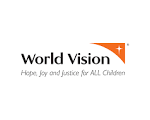
World Vision Uganda
About Company
World Vision started working in Uganda in 1986, assisting communities in the ‘Luwero Triangle’ in central Uganda to resettle and rebuild their infrastructure after the 1981–1986 war. Activities extended to Arua and Nebbi districts in north-western Uganda to address poverty and the lingering destruction from the 1978–1979 war. World Vision then moved into Gulu in 1988, commencing relief programmes for internally displaced people at the start of the ongoing conflict in northern Uganda.
Hoima and Masindi districts, in western Uganda, were the next areas to come on board with the initiation of projects to tackle poverty and health problems. Then, in 1991, projects were started to address HIV/AIDS problems and to support orphans in Rakai and Masaka in southern Uganda.
Responding to the famine at Kamwezi in Kabale in 1993 was World Vision’s entry point into south-western Uganda. The organisation moved to the eastern region in 1995 with a project in Soroti to tackle the effects of cattle rustling and rebellion.
World Vision’s development work was based on the model of Community Development Projects (CDPs). The CDPs, like the Area Development Programmes (ADPs) that succeeded them, were funded mainly through child sponsorship.
Projects based on grants were also started to cover different sectors including water and sanitation, HIV and AIDS, food security, feeder roads, psychosocial support and peace building. Expansion in geographical areas and in activities has been based on need.
Today World Vision’s fundamental strategy is to empower communities to take charge of their own development. World Vision serves in 38 districts and operates 53 Area Development Programmes (ADPs). Close to 129,800 registered children have benefited from World Vision Uganda’s ADPs in 2011.
Achievements
One of the major landmarks recently was the design and implementation of the new World Vision Northern Uganda Strategy 2010 – 2012. The new strategy’s focus is to help communities move from relief to recovery and development.
The strategy covers areas of education; health and HIV and AIDS; water, sanitation and hygiene; livelihood; vocational skills training; peace building and psychosocial support. It provides for the establishment of Area Recovery Programmes (ARPs) rather than ADPs in Pader, Amuru, Gulu and Kitgum districts. The first, funded by WV Canada, was established in Pader in 2010.
Another landmark was the implementation of the World Vision worldwide Child Health Now (CHN) campaign in Uganda. This is a three-year programme aimed at promoting Millennium Development Goal 4, that is, reducing deaths of children under five years by two thirds by the year 2015. In Uganda, the campaign in which World Vision works with partners focuses on reducing incidence of malaria and improving nutrition of children and mothers.
World Vision also spearheaded the first Tumaini Awards organised in partnership with ANPPCAN Uganda Chapter, Child Fund, Compassion International, Save the Children and Uganda Rights NGO Network. 25 Winners (adults and children) were awarded cash and non- cash items worth 50 Million shillings ($20,000 US dollars).The objectives of the awards were to generate increased community awareness around children’s rights and issues, honour those who deserve to be recognized for their work with children, showcase philanthropic child-focused work of partners and sponsors, and inspire others to work harder to improve the lives of children in Uganda.


